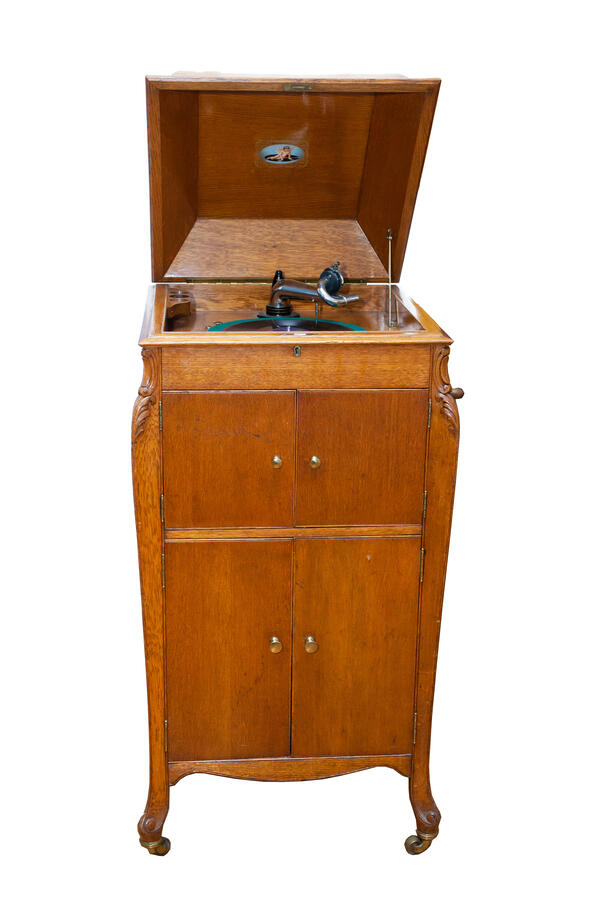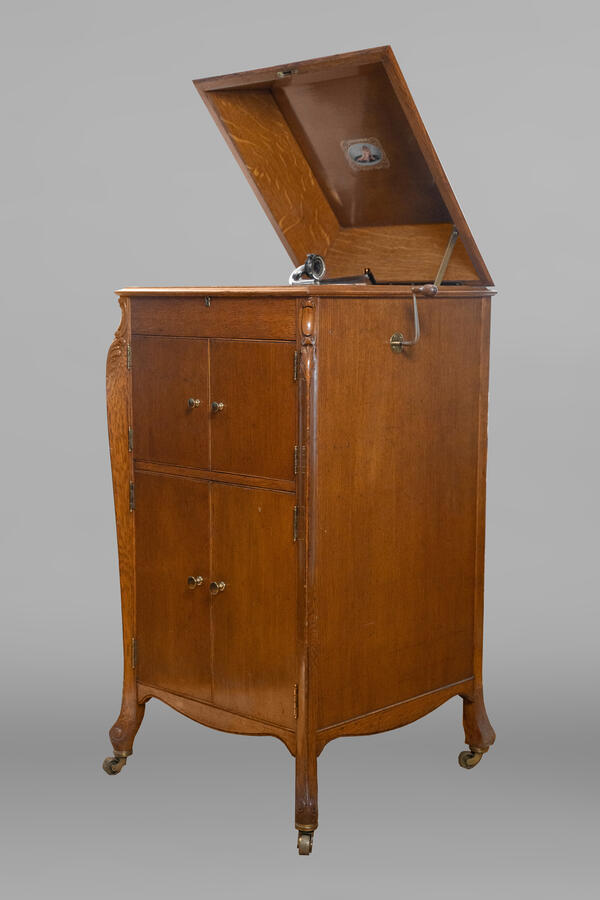Gramophones appeared in Russia only several years after the industry emerged in the United States and Europe. The idea of sound recording and reproduction was independently expressed by the French poet Charles Cros and the American inventor Thomas Edison in 1877. The latter soon succeeded in bringing his idea to life, and created a machine known as the phonograph. Ten years later, in 1887, the American inventor Emile Berliner improved the idea set forth by Charles Cros and developed a device called the gramophone.
In 1893, Berliner founded the United States Gramophone Company, the first commercial enterprise of its kind. The factory’s gramophones, records and related products can be easily recognized by its two main trademarks: “Angel” (initially known as “Recording Angel” in Russia, and then “Recording Amour”) and “His Master’s Voice”, with an image of a dog listening to the gramophone.
The “Recording Amour” record label was the first and most popular one in Russia. All records bore a trademark: the pale pink paper seal had an image of a cupid writing with a quill pen. From the very beginning, “Gramophone” focused on recording outstanding famous opera singers. Chaliapin was the first singer in Russia to have his voice played on a gramophone. Of all his contemporaries, he was the one who was recorded more than any other singer. Before the revolution of 1917, records with Chaliapin’s voice enjoyed such an enormous success that sometimes they were even faked.





